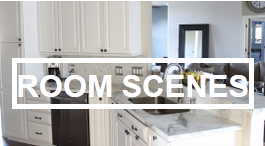How do you get your Brilliant White so White?
November 20, 2015 Leave a comment
Believe me it is not the detergent (they are always seem to be showing ads or commercials about white, whites). So thought I would just throw that in 🙂
What makes Brilliant White glass Tiles so white is a great question. I have looked on Houzz.com and on the internet and it seems that people are really struggling with this, it really is sad. I see a lot of questions and concerns online. So as someone with decades of glass tile experience and having worked on the floor above a glass tile kiln I thought I might share.
Let me take you on a little journey though my brief history to explain why Brilliant white glass tile is so Brilliant white. So that when it goes on a bloggers well known site with tens of thousands of followers and up for over a year he is not saying why is this Brilliant White bloody Green? Instead it is perfect.
Many years ago, (decades ) I worked for a Glass Tile manufacturer (I have worked for two one is the worlds largest, but that is a side note), we were many things tile but one thing we manufactured was glass tile, boy that kiln was nice in the British winter. Initially in the early 1990s white glass was very difficult, and extremely expensive as time progressed we improved and so did others.
Glass has Iron content, this is a natural deposit in the manufacturing process. It is this iron content that gives glass a natural green tint. It really has no impact on colored glass as you can adjust the coloring to take that green tint into account.
There was a lot of science behind it but long story short remove the iron content and the glass becomes clear. The process is expensive somewhere around $1-$2 a Square Foot (today), though we take the margin cost. We do this so we can offer a ‘clear’ price structure. (It used to be $20 to $50 a square foot to go through the process, it was market prohibitive).
By 2000 in the UK we were experts, actually late 1990s. But this product; this perfect white glass at a reasonable price needed a name. The name or brand “De-ironization white glass tile” did not really have a marketing ring to it.
So not, I repeat not (I claim no responsibility any marketing involvement in the name) being in this marketing meeting they decided on the term “Virgin” white glass. At that point I suppose they had not really thought of the global implications, they were just thinking pure. Would have been better off with “Pure White”.
So after spending a lot of money this name was marketed and for sometime even the foreign companies accepted the term, reluctantly. Over the last fifteen years that term has died out. As other companies have copied the process. (I suppose how the wireless became the radio). Really the term did mean a lot of negative things on the global stage, and back in 1990s that was not really on the minds of the British.
So here we are today with our white glass tile. A true white glass tile, without the green tint has been through a process to remove the iron content.
Considering where the process and name of “Virgin Glass” was coined, I decided an ode to the British was in order. I decided “Brilliant White” should be the name, it is a British word “Brilliant” and put with White, sounded fair. So that is what we call it. So today if you are looking for a glass tile without the green tint you would need to buy “Brilliant White” Glass Tile.

Here you have it, on top is a glass tile with the iron content removed.
 $9.95SF and Free Shipping (thru March 2016, then we will review costs as we keep margins as low as possible) for 3×6″, 4×8″and 4×12″Glass Subway Tiles along with trims including the very popular Brilliant White Glass Dome on our glass tile page which you see breaking up the 3×6″ and 4×12″ tiles.
$9.95SF and Free Shipping (thru March 2016, then we will review costs as we keep margins as low as possible) for 3×6″, 4×8″and 4×12″Glass Subway Tiles along with trims including the very popular Brilliant White Glass Dome on our glass tile page which you see breaking up the 3×6″ and 4×12″ tiles.
You can see the difference look how pure and white the product is. Why do some people sell white glass with a green tint. They do not have any knowledge. They did not work in a factory or for some other reason. But you need knowledge and your supplier needs to know you have been in this industry for some time. You need to be able to examine their process and quality control, perhaps improve the process, perhaps invest. Treat them as a partner not a supplier.
I apologize for any grammatical errors I am not a great writer, just have knowledge of factories and manufacturing. For some I hope this helps.


